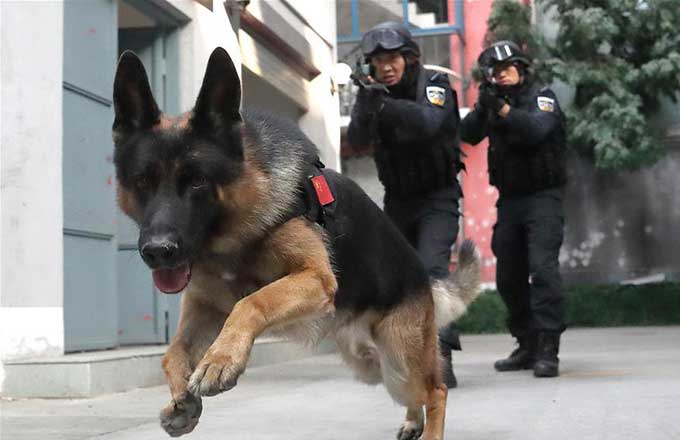Weightless tourism just 4 years away
ChinaRocket is planning commercial voyages to the mesosphere in 2020
Want to have a birthday party 140 kilometers above the ground, or dance weightlessly with your loved one? Just wait for a few years.
These out-of-this-world experiences will be possible, according to the plans of China's newly established commercial space company, which expects to start providing high-atmosphere and space journeys for people with enough cash as early as 2020.
Han Qingping, president of ChinaRocket Co Ltd in Beijing, said the company first will develop a 10-metric-ton reusable spacecraft and use it to ferry three to five travelers to a height of 80 km for a new perspective on the mother planet and experience weightlessness. That is the upper part of the mesosphere, higher than jets and balloons can travel, but just below the height where satellites fly.
No prices were given.
"By 2025, a 100-ton reusable spacecraft will be produced to send up to 20 passengers to an orbit as high as 140 km above the ground," he said. That's into the thermosphere, and is high enough to be considered space.
"Furthermore, we will begin to use the 100-ton vehicle to perform intercontinental scheduled flight and long commercial spaceflight around 2030."
Han made the remarks at the New Power of Space Industry Forum on Monday in Zhuhai, Guangdong province, one day before the 11th China International Aviation and Aerospace Exhibition, commonly known as Zhuhai Air Show.
His company was founded in mid-October by China Academy of Launch Vehicle Technology, the country's largest developer of ballistic missiles and carrier rockets. The academy itself is a subordinate of the larger China Aerospace Science and Technology Corp, the State-owned main contractor for the country's space program.
During the air show, ChinaRocket will sign a launch service contract with Changguang Satellite Technology Co Ltd in Changchun, capital of Jilin province, a major maker of commercial remote-sensing satellites in China, according to the company. No further information was immediately disclosed.
Tang Yagang, deputy head of CALT's space activity department, said ChinaRocket will offer four types of rockets to the commercial launch market, covering all orbits suitable for commercial space missions.
In China, a commercial space mission generally refers to a space activity paid for by an entity other than a Chinese government or a military agency. Earlier reports quoted experts as predicting that by 2020, the market value of commercial space activities in China will reach 30 billion yuan ($4.6 billion) each year.
"Three of the four rockets are off-the-shelf models because they are based on the current Long March series. The two liquid-fueled rockets will launch payloads to sun-synchronous orbit, low Earth orbit and geosynchronous orbit. The solid-fueled rocket will lift satellites to sun-synchronous orbit," he explained. Sun-synchronous orbit can keep a satellite in constant daylight, whereas geosynchronous orbit matches the Earth's rotation.
"We are also developing a new type of liquid-fueled, medium-lift rocket specifically for the commercial launch market. It will use pollution-free propellants. The maiden flight is scheduled to take place in 2018."
Han said his company plans to go public around 2020, adding it will share its facilities and equipment with other enterprises to boost the growth of the whole sector.
Hao Zhaoping, vice-president of CALT, said ChinaRocket will strive to tap the commercial launch market because commercial space activities have begun to represent the development trend of the industry.
"In addition to commercial launches, the company will also build launch facilities and space-themed parks," he said. "We are creating a commercial space sphere in China, which will turn into a significant part of the nation's space industry."
Beside carrier rockets, the academy is designing a combined-cycle spaceship propelled by a combination of turbine engines, ramjets and rocket engines. The futuristic space vehicle will take off and land on an airport runway and will carry out space tourism and ultrafast passenger flight, according to researchers at CALT.
Internationally, several private space enterprises such as SpaceX and Orbital Sciences are developing space vehicles in a bid for business opportunities in space tourism and passenger and cargo transportation.
- Is it a thing? 10 odd jobs where you can make good money
- Message on a bottle: Mineral water company launches drive to find missing children
- Sun Yat-sen champion of national integrity, unity: Xi
- Four killed, two injured after house collapses in C China
- Cross-Straits forum held to commemorate Sun Yat-sen






















